It’s October, and that means one thing: as with previous years, it’s time to build an over-the-top entry for Los Alamos Arts Council’s scarecrow contest! And, as with past entries, this one’s not really going to be a scarecrow either.
This year’s theme is “Into the Woods”, so I wanted to build something big that would evoke “the woods”, but would also be interesting to design and easy to store. After considering a few ideas, I decided to do an up-scaled version of those lasercut balsawood models you can get in museum gift shops. Only instead of a little dinosaur skeleton, I was going to make two six-foot tall trees.
But why stop there? I build these scarecrows under the name of Los Alamos STEAMlab, so I should add some tech too. So I decided to also add a soundboard that would play animal sounds when its buttons were pushed.
With a strong idea in mind, it was time to start planning.
Prototyping and Design
I’ve never designed anything like this before, so I started out iterating over some design ideas with Inkscape and cereal box cardboard.
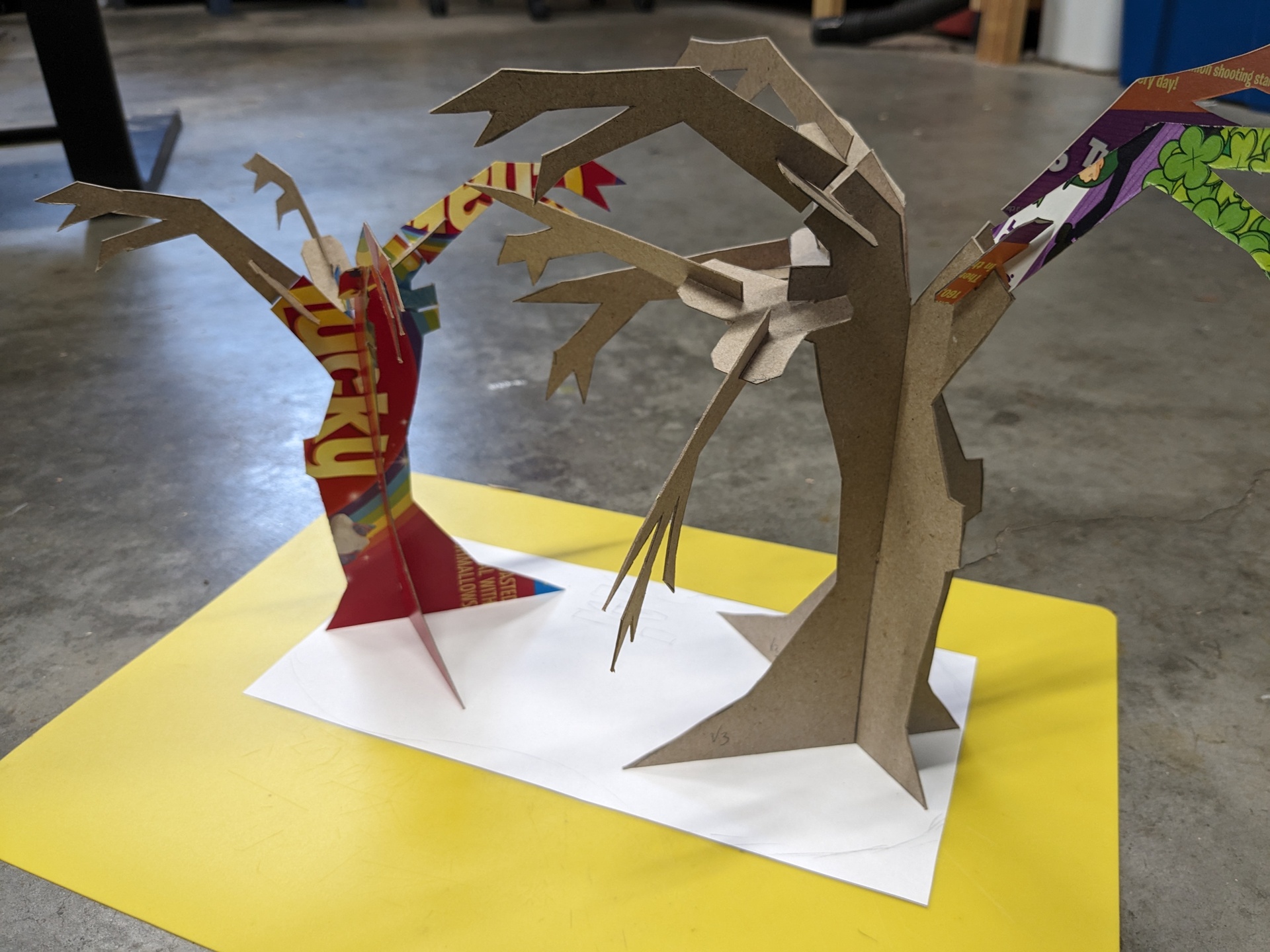
After a few iterations, this design won out. The two differently sized trees give some nice asymmetry to the model, and the sharp angles bring out the flatpack design while enhancing the creepiness factor. The final result is going to be big! The white rectangle on the bottom of the image above represents a full 4-foot by 8-foot sheet of plywood, giving plenty of room for people to walk among the trees if they want.
Construction
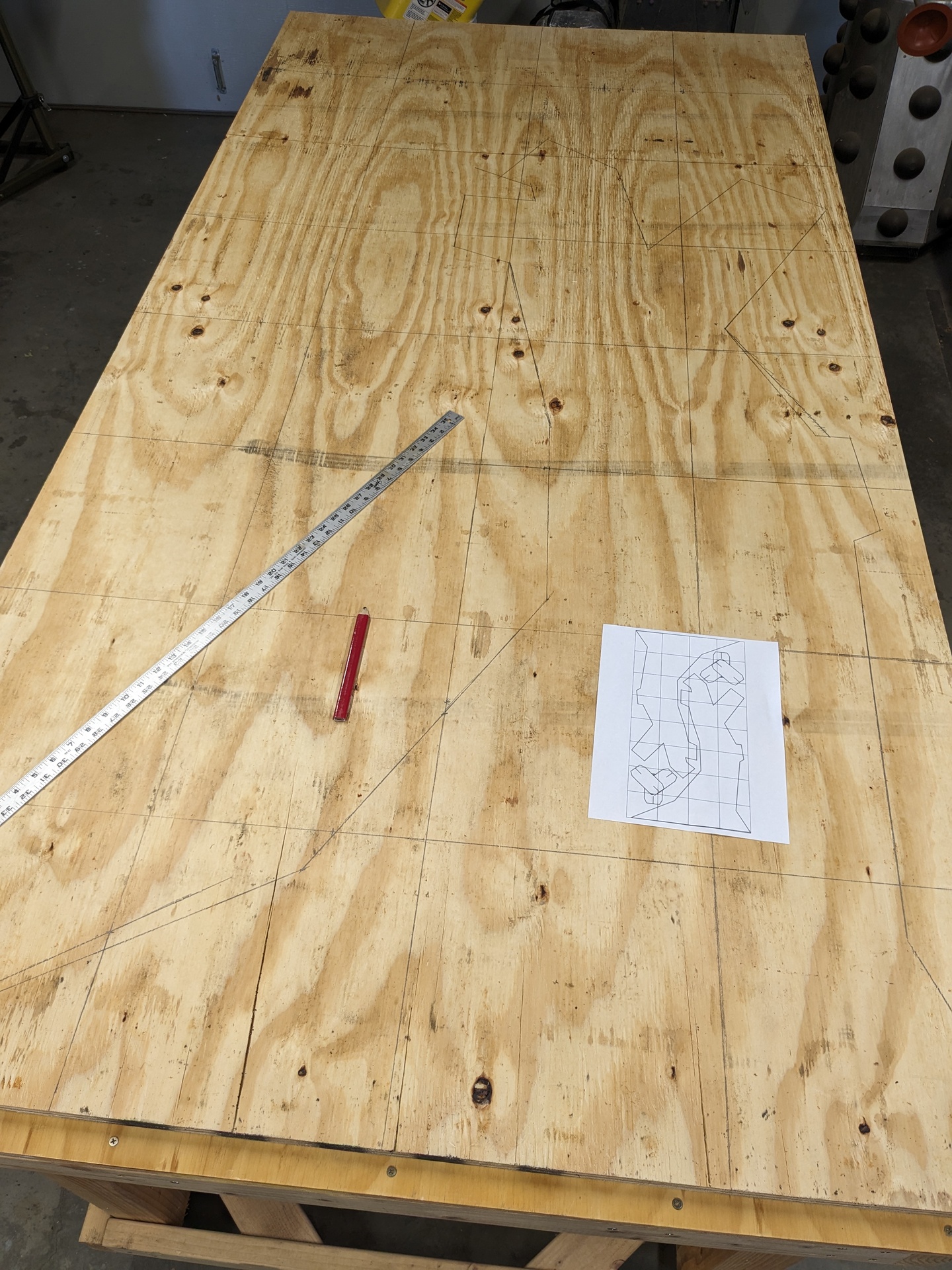
After outlining all of the trunk, branch, and connector pieces in Inkscape, it was time to start building. I didn’t need the pieces to be precisely shaped, so I used a traditional “scaled grid” approach to freehand the piece outlines onto the plywood with the help of a yardstick as a straightedge.

After that, it was just a matter of doing a ton of cutting with a handheld jigsaw. When the first one was done and assembled, it barely fit in the garage! It was exactly what I was looking for.
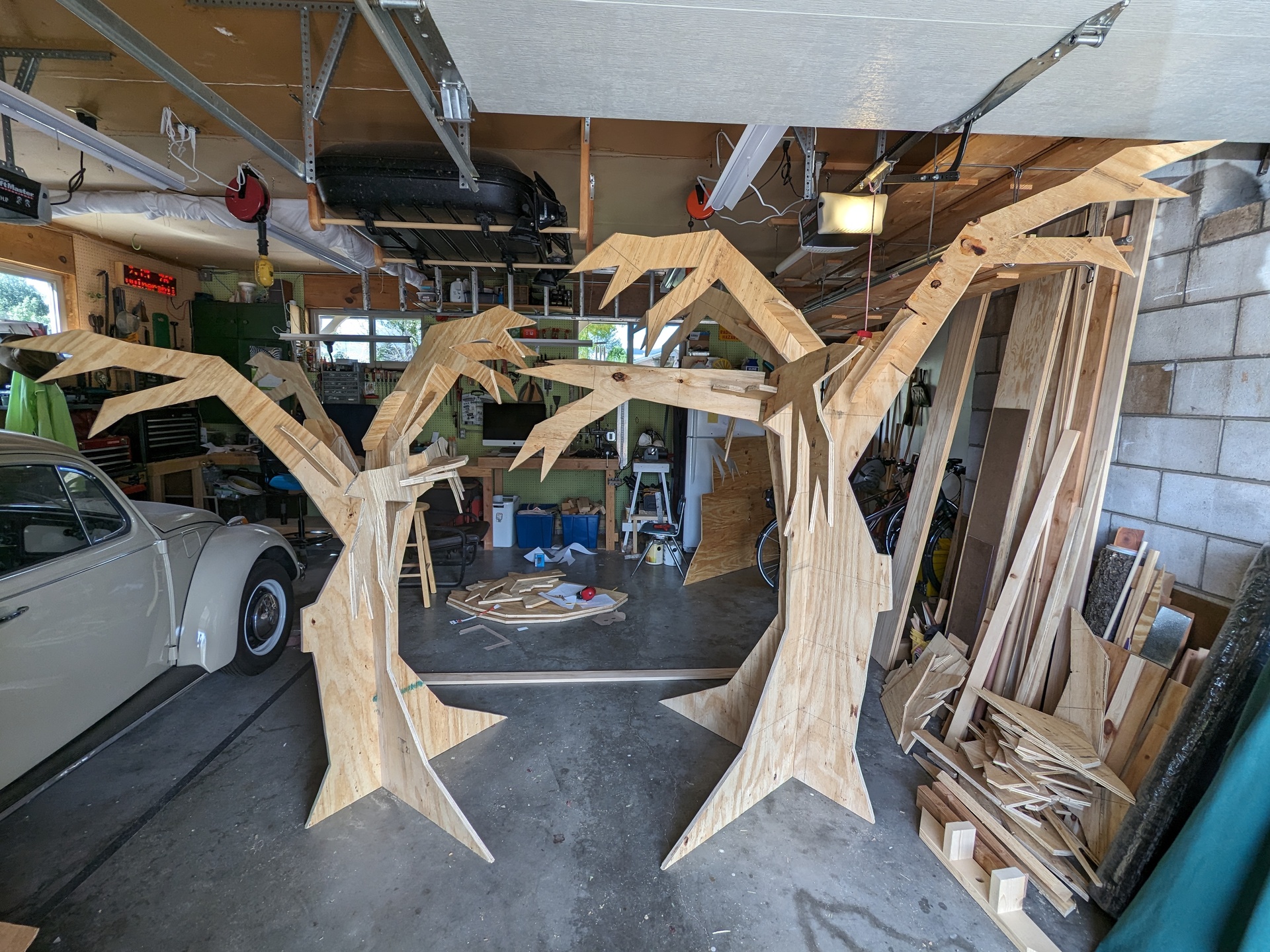
With the second tree built, it was even better. At this point, the trees were pretty much done and just needed to be painted. That gave me time to focus on the sound board while the paint dried.
Sounds
Two giant trees look awesome, but aren’t that interactive. To fix that, I aimed hide some speakers in the trees that could be controlled by buttons on a sign like you might find in a forest. For the sounds, Lis collected a variety of animal sounds and pitch-corrected them to match musical notes. With a little creativity, you could play simple songs on this scarecrow.
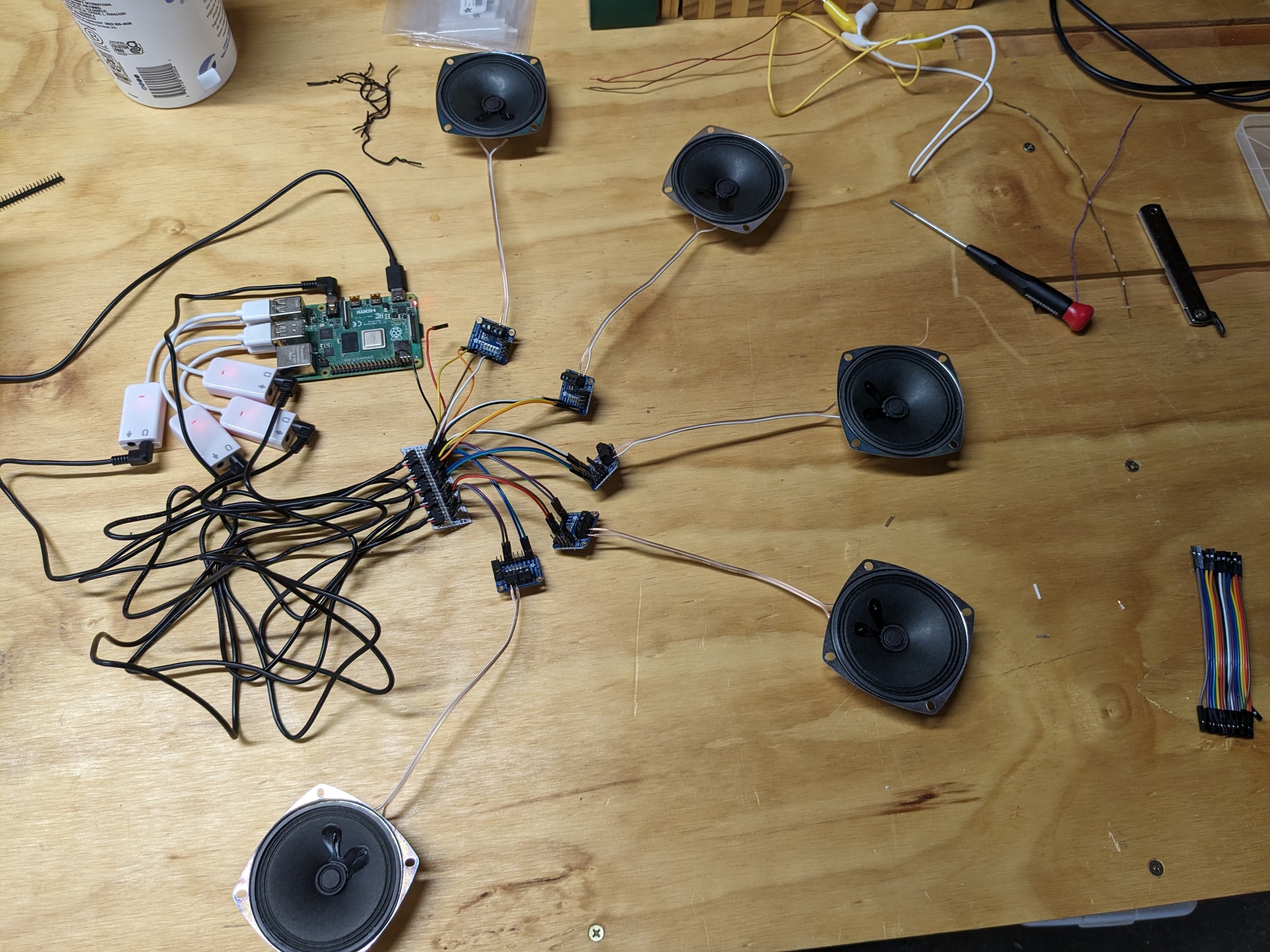
For the electronics, I plugged a whole bunch of cheap USB sound cards into a Raspberry Pi board. The sounds are played by some super-hacky Python code that monitors five big arcade buttons via the GPIO pins, playing the right sound when each is pressed.
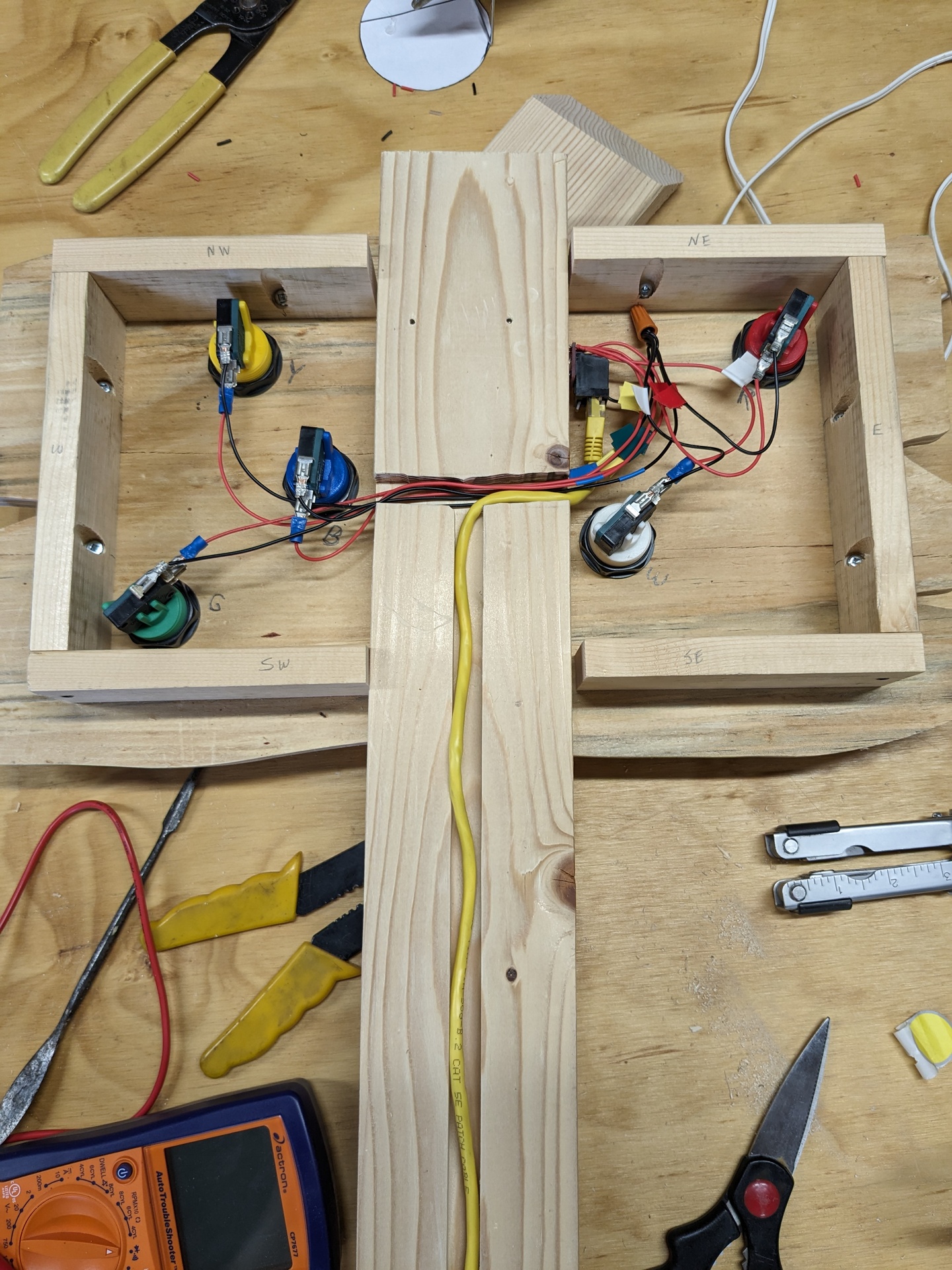
To trigger the sounds, I built a rustic sign like you might find in a forest with arcade buttons on the front. The sign is hollow, making room for the backs of the buttons and the wiring that goes along with them. I used a short ethernet cable to connect the buttons to the Pi board, which is hidden in the base of the sign. There’s no fancy communication protocol here – each button just uses one strand of the cable to link up with a GPIO pin on the PI, plus one more strand for a shared ground.
The Result
The final result was awesome in person, but it was really hard to capture its 3d shape on film.
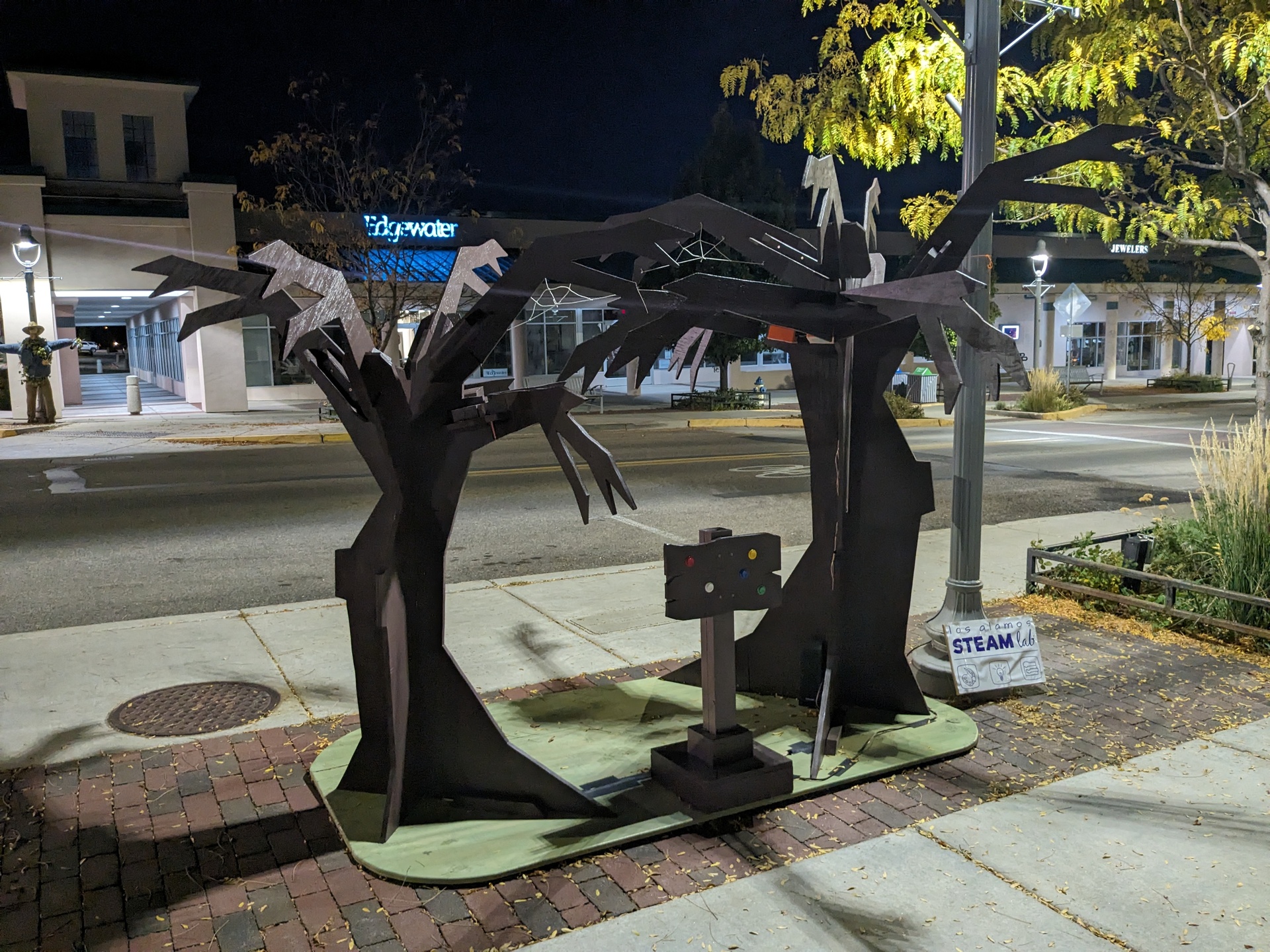
My traditional scarecrow spot on Central Avenue is under a light pole that has a power outlet in its base, and the light made some great shadows on the ground. My only disappointment is that I ran out of time to paint more details on the trees themselves, so they ended up a bit monotone during the day. But at night, they looked really good.
The sound board was very popular, which is exactly what I hoped for. As I was taking the whole thing down after Halloween, somebody walking down stopped to say “My grandchildren loved this! Every time we walked by, we had to stop and play with the sounds for a bit!”. And through a happy accident, I ended up logging each of the button presses on the Pi’s system log. Curious about what was most popular during the two weeks it was up?
| Button Color | Animal | Button Presses |
|---|---|---|
| Red | Owl | 5006 |
| White | Tawny owl | 2651 |
| Yellow | Cricket beat | 3035 |
| Green | Coyote | 3407 |
| Blue | Crow | 3482 |
Build Your Own!
The final design was just some flat shapes in an SVG file, which was super easy to import into Tinkercad, add some thickness, and export as a 3d-printable file. If you’d like a little flatpack tree as a desktop Halloween decoration, grab a copy from Thingiverse and enjoy: https://www.thingiverse.com/thing:6275543
